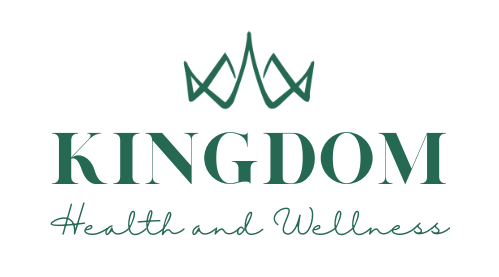If you were told there’s a disease that about 12 million Americans currently carry the gene for and that this same disease affects more than 30,000 children and young adults in the U.S., you’d want to know about it, right? Of course you would, and that’s why you need to know about cystic fibrosis – from a functional perspective.
Understanding Cystic Fibrosis
Cystic fibrosis (CF) is an inherited disorder that disrupts normal functions of epithelial cells, the cells that line the passageways of many of our most important organs — including the lungs and respiratory system, liver, kidneys, skin, and reproductive system. People with CF have a certain defective gene that impairs epithelial cell functions causing them to experience a buildup of sticky mucus inside the body, often leading to lung damage and chronic coughs. This defect in turn affects how CF patients breath and filter air, digest food, and absorb nutrients in the digestive tract.(1)
According to the Cystic Fibrosis Foundation, currently CF is considered to be incurable, however certain dietary interventions, supplements, and lifestyle habits can help manage symptoms and improve quality of life. (2) Fortunately, over the past several decades cystic fibrosis treatment approaches have come a long way. Most people with cystic fibrosis now live a higher quality, longer life! Research shows early diagnosis, improved understanding of the body, and better supportive therapies make living with CF easier and more attainable!
Earlier Diagnosis & Better Treatment
Early diagnosis (which can now be in-utero and infancy) of cystic fibrosis can help prevent complications and certain developmental problems, helping improve a patient’s quality of life. Before screening, children with CF were often diagnosed after becoming severely malnourished with vitamin deficiencies – making it harder on their bodies to recover.
Neonatal CF screenings, newborn screenings and even carrier screenings can be done for early awareness.
Learn More About CF Screenings
For older children and adults, signs and symptoms from the body are tellers that CF is present. These can include:
- Thick, viscous mucus secretions in the lungs
- Changes in color and amount of material coughed up from the lungs called sputum
- Chronic cough, possibly with blood streaking
- Wheezing
- Bronchitis
- Chronic sinusitis
- Asthma
- Nasal polyps (fleshy growths inside the nose)
- Weight loss, failure to thrive in infants, abdominal swelling
- Excessive salt in sweat, dehydration
- Failure of newborn to pass stool
- Abdominal pain, flatulence
- Fatigue
- Greasy, smelly feces
- Failure to thrive
Although these symptoms may not be caused by CF, they are still signals from the body that something is at dis-ease within the body and reason to have in-depth (functional) lab work done and interpreted by a Functional Medicine Provider.
“Treatment,” Support & Symptom Management
With the complexity of genetics, gene therapy is something to be cautious of when considering treatment options for CF. As such, there is no “cure” for CF, but there is LOTS of research on positive effects of supportive therapies. With the “advancement” of modern pharmaceuticals, doctors and researchers have started raising an eyebrow to the most common “treatment” medications and have published their negative effects. In this section, we will share our function perspective on all available therapies. As with any therapy, you should speak with your provider before starting any treatment.
Commonly Prescribed Medications
With any medication, it is important to be cautious of how it effects the body as a whole and the long term effects as most modern medications (even super common ones such as ibuprofen) can deplete the body of necessary nutrients and cause other long term symptoms or make the condition worse.
Medications for CF are often inhaled while others are ingested and commonly include the following:
- Bronchodilators
- Using certain inhalants or bronchodilators can help restore breathing and keep infections away, as can the use of devices called oscillatory positive expiratory pressure, which increase airflow to the lungs through use of vibrations that help break mucus. (4, 5) Research shows that approximately 50 percent of patients with CF have some degree of bronchial lability (asthma), which a bronchodilator can improve by increasing clearance of secretions from the chest. Bronchodilators are sometimes used in combination with other therapies, like physical therapy, or anti-mucus medications and salt solutions to expel phlegm and offer even more relief.
- The type of bronchodilators used in people with cystic fibrosis (CF) are beta-agonists. The most commonly prescribed bronchodilators for CF are: Albuterol (Ventolin®, Proventil®, Proair®) Levalbuterol (Xopenex®)
- The list of side effects for Albterol is long, as is the list of side effects for Levalbuterol, but what we find most concerning is some research even suggests that inhalant albuterol medications can alter genes in children!
- Using certain inhalants or bronchodilators can help restore breathing and keep infections away, as can the use of devices called oscillatory positive expiratory pressure, which increase airflow to the lungs through use of vibrations that help break mucus. (4, 5) Research shows that approximately 50 percent of patients with CF have some degree of bronchial lability (asthma), which a bronchodilator can improve by increasing clearance of secretions from the chest. Bronchodilators are sometimes used in combination with other therapies, like physical therapy, or anti-mucus medications and salt solutions to expel phlegm and offer even more relief.
- Mucolytics
- Which thin the mucus, but can cause Nausea, Vomiting, Diarrhea, Headache, Fever, Runny nose, Sore throat, Drowsiness, Rash, and, less commonly but more severely, bleeding in the gut (watch for black stool).
- Decongestants
- Often give to CF patients as well as people with seasonal allergies, reduce swelling of the membranes of the breathing tubes. However, they commonly cause side-effects of the central nervous system (nervousness, insomnia, irritability, headache) and cardiovascular (palpitations, tachycardia) effects. In addition, these drugs may elevate blood pressure, raise intraocular pressure and aggravate urinary obstruction.
- Read more about common decongestants.
- Antibiotics
- In CF, antibiotics are used to fight lung infections and definitely have their place. However, be aware that they kill the good bacteria that regulate the immune system. Antibiotics are like dropping an atomic bomb on your gut.
- There is a time and place for antibiotics but they are not a long-term solution and, when overprescribed, can cause more harm than good.
- It is estimated that our gut contains approximately 100 trillion microbes from over 1000 species, along with other microbes like yeast, fungi, and viruses.
- Some of these bacteria are beneficial to our health, while others are not. When we take antibiotics, it kills off all those harmful bacteria (bugs) that are causing your issues. However, it also wipes out all your good bugs at the same time! We need those healthy bacteria in our body because they play a vital role in digestion, immunity, energy production, and they even produce vitamins and minerals for our body.
- In CF, antibiotics are used to fight lung infections and definitely have their place. However, be aware that they kill the good bacteria that regulate the immune system. Antibiotics are like dropping an atomic bomb on your gut.
- Nonsteroidal anti-inflammatory drugs (NSAIDS)
- Used to improve weight gain and reduce declines in lung function, but can cause gastrointestinal toxicities, cardiovascular risks, renal injuries, and hepatotoxicity as well as hypertension and other minor disorders (5), (6), (7), (8).
- Common brands of NSAIDs include ibuprofen (Motrin, Advil) and naproxen (Aleve). Celecoxib (Celebrex), diclofenac (Cataflam, Voltaren) are prescription NSAIDs. Aspirin is also an NSAID, but it doesn’t pose the same heart attack and stroke risks.
- NSAIDs have been linked to many health disorders:
- Corticosteroids (Steroids)
- Commonly referred to as steroids (cortisone and prednisone), they are prescribed to CF patients to reduce inflammation in the airway, but Side effects of oral corticosteroids used on a short-term basis include fluid retention, increased appetite, weight gain, insomnia and mood changes.
- Side effects of oral corticosteroids used on a long-term basis (for more three months) include:
- Osteoporosis
- High blood pressure
- Diabetes
- Weight gain
- Increased vulnerability to infection
- Cataracts
- Glaucoma
- Muscle weakness
- Thinning of the skin
- Bruising easily
A Better Way to Support the Body when Managing Cystic Fibrosis
Digestive problems caused by CF or CF medication damage can be improved with:
- Pancreatic enzymes – which are digestive enzymes made in the pancreas that include Amylase (made in the mouth and pancreas; breaks down complex carbohydrates) Lipase (made in the pancreas; breaks down fats) Protease (made in the pancreas; breaks down proteins)
- Functionally, taking enzymes alone is not going to do much good unless your provider removes foods that may be causing a reaction such as an intolerance or other sensitivity; THEN replaces the missing enzymes, which may also include hydrochloric acid, bile, or digestive enzymes. Because the body, gut, and brain are SO complex yet so connected, it is also important to continue rebuilding the gut flora while repairing the gut lining with foods & nutrients like lacto fermented vegetables, bone broth, beef liver, L-glutamine, etc. and rebalance the system as a whole through lifestyle: meditative prayer, quiet time, sun exposure, movement and making sure that there’s time for outdoor play. People forget to play and the importance of reducing stress in healing the gut!
Movement & Complementary Therapies
- Breathwork – breathing is essential for life. Breathing exercises, specifically diaphragmatic breathwork, will increase the strength of the breath – providing the body with more oxygen and better quality of life while also calming the nervous system and reducing stress and inflammation in the body.
- Twisting stretches – Twists are postures that generally involve moving the shoulder girdle to face in an opposing direction in relation to the hips. There are different twists that target the upper, middle and lower portions of the torso, all having their own unique set of health benefits. Some of these benefits include increased blood flow (which increases circulation), increased cellular detoxification, and promotes healing – all very important for people managing CF.
- Moderate walking, swimming, jumping, and similar activities can improve lymph drainage, blood circulation, air flow, and improve overall quality of life. Our bodies are designed to move!
- Chiropractic – regular chiropractic care is more about the nervous system than the spine (find a nervous system centered chiropractor near you). By ensuring no interference in the nervous system, chiropractic can not only help minimize the symptoms of cystic fibrosis, but it can also help with pain that is commonly associated with the disease, adding to the quality of life and overall wellness of the individual.
- Acupuncture – Acupuncture was found to be effective in decreasing pain complaints in patients with cystic fibrosis. No side effects or complications were reported in relation to the acupuncture treatment! https://pubmed.ncbi.nlm.nih.gov/15844843/
- Massage Therapy – Massage and touch are a necessity for CF. Engaging movement of the upper body with stretches, rocking, jostling, vibration and tapotement techniques can encourage movement of bound congestion and fluids. Incorporate these techniques into a classic session to maximize benefits of massage for pain reduction, stress relief, decongestion, and improved breathing.
- Lymph & Fascia Work – Fascia (also known as connective tissue) houses the lymphatic system in its Superficial layer. The fascia and muscles need to be flexible, supple and strong to move the lymph through the lymphatic vessels. Fascia also has a faster communication rate than the nervous system! Doing manual lymphatic drainage and fascia maneuvers to eliminate mucus congestion, improves circulation, and oxygen intake!
Nutrition & Herbal Support
- Eliminate food allergens and foods that increase mucus production, including dairy (milk, cheese, sour cream, and ice cream), wheat (gluten), soy, corn, potatoes, cabbage, bananas, sugar, preservatives, food additives, and excessive salt and meats.
- Eat more foods that decrease mucus production, including garlic, onions, watercress, horseradish, mustard, parsley, celery, rose hips tea, pickles, lemon, and anti-inflammatory oils (nuts, seeds, and cold-water fish).
- Eat more foods containing digestive enzymes, such as papaya and pineapple.
- Avoid refined foods, such as white breads, pastas, and sugar.
- Eat fewer red meats and more lean meats, cold-water fish, tofu (soy, if no allergy), or beans for protein.
- Use healthy oils, such as unrefined, high-quality coconut oil or olive oil.
- Eliminate trans fatty acids, found in commercially-baked goods, such as cookies, crackers, cakes, French fries, onion rings, donuts, processed foods, and margarine.
- Avoid tobacco.
- Drink 6 to 8 glasses of clean water daily.
- Omega-3 fatty acids. Such as fish oil, to reduce inflammation and improve immunity.
- Whole food multi-vitamin with trace minerals
- Digestive enzymes, with meals.
- Coenzyme Q10 (CoQ10). For antioxidant and immune activity.
- N-acetyl cysteine (NAC). For antioxidant effects.
- Mullein tea for lung health. Unless otherwise indicated, make teas with 1 tsp. (5 g) herb per cup of hot water. Steep covered 5 to 10 minutes for leaf or flowers, and 10 to 20 minutes for roots. Drink 2 to 4 cups per day.
- Green tea ( Camellia sinensis ). Standardized extract, for antioxidant and immune effects.
- Cat’s claw ( Uncaria tomentosa ). Standardized extract, for inflammation, immune and antibacterial or antifungal activity.
- Milk thistle ( Silybum marianum ). Seed standardized extract, for detoxification support. Milk thistle may have an estrogen-like effect, so people who have a history of hormone-related cancers should use milk thistle with caution. Milk thistle is in the same family as ragweed and may cause allergic reactions in people who are sensitive to ragweed. Since milk thistle works on the liver, it may interact with medications.
- Bromelain ( Ananus comosus ). Standardized extract, for pain and inflammation. Bromelain may increase bleeding in sensitive individuals, such as those taking blood-thinning medications, including aspirin. Bromelain may also impact how your body metabolizes antibiotics.
- Ground Ivy ( Hedera helix ). Standardized extract, to reduce mucus production and to loosen phlegm. Ground ivy can be particularly toxic to the liver and kidneys. People who have a history of seizure disorders should avoid ground ivy. You should only take ground ivy under the supervision of a trained herbalist who is working with your physician.
- Curcumin for its amazing anti-inflammatory properties.
Cystic Fibrosis Main Takeaways
- Cystic fibrosis affects more than 30,000 children and young adults in the U.S.
- Research shows early diagnoses of cystic fibrosis can help prevent complications and certain developmental problems, helping improve a patient’s quality of life.
- The best ways to naturally manage cystic fibrosis include early diagnosis and care, dietary intervention to prevent deficiencies, help with proper lung function and breathing, and physical therapy and movement.
Additional Resources:
Breathing Exercises for Cystic Fibrosis





